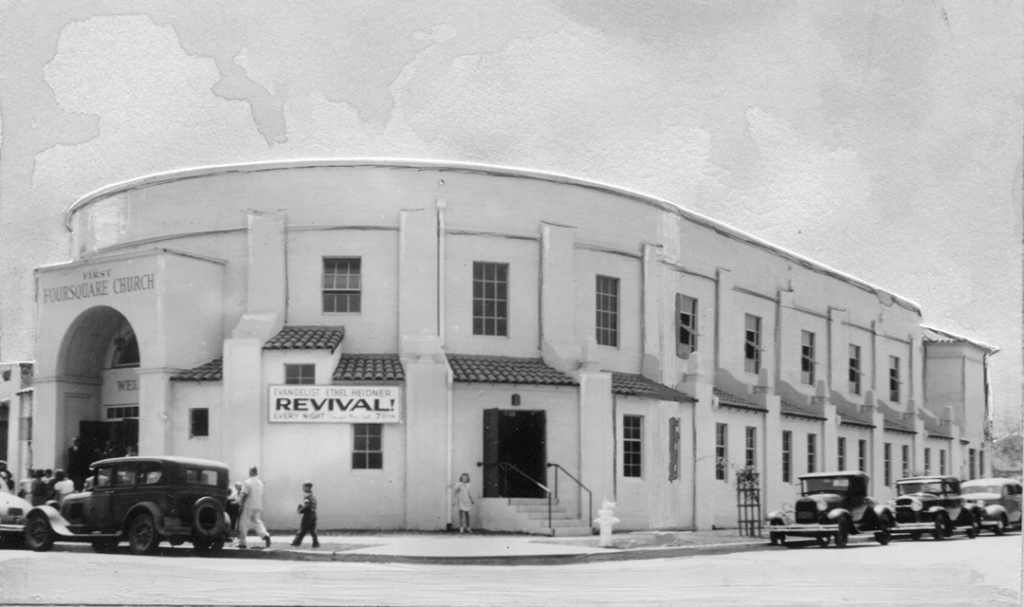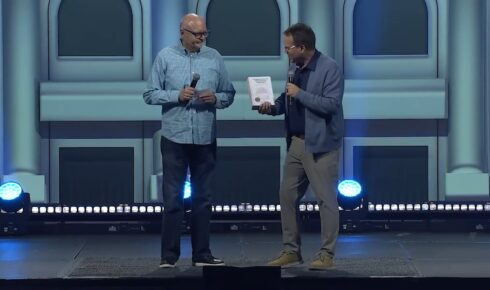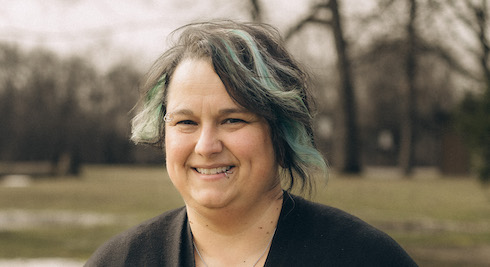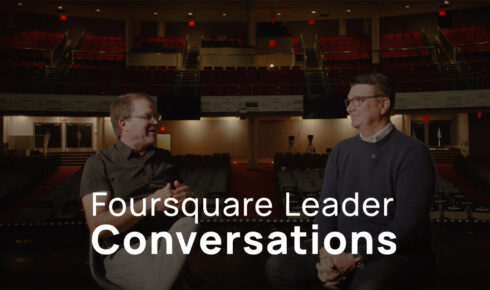
While The Foursquare Church celebrated its 100-year anniversary in 2023, this year marks another historical milestone: the 1924-1925 Lighthouse church planting movement that is still bearing fruit.
“It was central to Sister Aimee’s vision to not just grow one church, but create a movement of leaders,” says Russell Joyce, director of Foursquare Multiply, which has 96 church plants in process with approximately 20-25 more starting in January 2024. “The spirit behind discipling people and then sending them out is special.” He notes that they are also creating contextualized pathways for four different language groups: English, Spanish, Portuguese and Russian.
Known as “Branch Churches,” the congregations that rippled across Southern California a century ago drew their inspiration from founder Aimee Semple McPherson. In her memoir, she wrote that they sprang up like mushrooms in nearly every locality.
“These were not premeditated by us,” Sister Aimee said in The Story of My Life. “We did not draw the blueprints and then build a work to fit them. The work sprang up everywhere and we had to hasten to put the needful amount of scaffolding under it to hold it together.”
The first six locations were all in Southern California: Long Beach, Pomona, Pasadena, Riverside, Santa Monica and Santa Ana; all are home to one or more Foursquare congregations today. The more than 30 Foursquare churches in the Greater Los Angeles area symbolize the Lighthouse initiative’s lasting impact, Russell says.
“I’ve heard stories when people graduated from L.I.F.E. Bible College (now Life Pacific University) in the 1920s, you received a one-way ticket and were sent to the end of the line, and that’s where you started a Lighthouse church,” he says. “Twenty-two-year-olds graduating and getting on a railcar. A lot of our Lighthouse churches were at the end of a rail line in the 1920s L.A. transit system, which is kind of cool.”
“It was central to Sister Aimee’s vision to not just grow one church, but create a movement of leaders. The spirit behind discipling people and then sending them out is special.” —Russell Joyce, director of Foursquare Multiply
Russell and his podcasting partner, Bushnell University professor A.J. Swoboda, touch on some of this history in the Same Jesus Podcast. The 40-minute programs debuted in July 2023, and are available on YouTube, Spotify and Apple Podcasts.
Among other things, they point out that these churches’ mushrooming growth paralleled the explosion of Los Angeles, which doubled from 500,000 to 1 million during the 1920s. In another episode, they discuss the empowerment Aimee brought to church life. Whether young people, minorities or females, Russell says she empowered people who were generally overlooked by established authorities.
“In the 1930s, Foursquare passed an anti-gender discrimination resolution that said there can be no gender discrimination of any kind in a Foursquare office,” Russell explains. “In the 1930s, it was pretty radical for an organization to be doing that.”
He says such empowerment included equipping different nationalities, which is why by 1927 Angelus Temple offered Sunday school lessons in multiple languages. Today, 2,000 Foursquare churches in the U.S. are dwarfed by more than 67,000 globally, which Russell believes also reflects Sister Aimee’s spirit of empowerment.
To be technical, the church in Long Beach, Calif., traces its roots to October 1923. That’s when Rev. Thomas Gale, the associate pastor of Angelus Temple, oversaw services in the city 24 miles south of L.A. However, the church wasn’t announced as permanent until July 13, 1924.
By June 1924, the Pomona church—pastored by Alice Wilson—had purchased property and a church building. Meanwhile, the church in Riverside had more than 100 members by July 1924.
Santa Monica Foursquare held its first service on July 6, 1924, while Santa Ana pitched a tent two weeks later and laid the cornerstone on its first building that October. The original church closed in 1928 but reopened in 1931. The Pasadena Crusaders also sprang up in 1924.
These works were preceded by Sister Aimee’s enthusiastic preaching in Long Beach on the first Monday of each month, according to the April 4, 1923, edition of the Angelus Temple Bulletin. One article chronicled a song service, prayer meeting and “war council” that met on the beach, with students surrounding Aimee and pledging their loyalty to the Lord.
At a meeting afterward in a nearby auditorium, young people gathered to testify, followed by a short address by Sister Aimee and an altar call that filled the improvised altar “from end to end.”
“At the end of their course and practical training these young people will be duly and solemnly ordained by the laying on of hands and sent forth into the field with the endorsement and full backing of the Temple,” the Bulletin reported. “[And] God willing, to span the continent and sail the seven seas bearing with them the power to preach the four-square Gospel of our Lord Jesus Christ.”
The excitement of that era appeared in a September 1924 issue of Foursquare’s Bridal Call. It chronicled how Angelus Temple served as a forerunner of the modern multisite church when conversions occurred in Long Beach and Pasadena via telephone and radio hook-ups.
“Surely the day of miracles is not over, and such an unprecedented opportunity for the preaching of the Word has never been known!” a reporter wrote.
While many critics of that era labeled this as “emotional” or “McPhersonism” that would die out when she did, Russell says The Foursquare Church’s exponential growth in the decades after her 1944 death is a testament that God was in the movement.
“She was an anointed person, without question,” asserts Russell, who also pastors Faith Center (Eugene Foursquare Church) in Eugene, Ore. “God used her, and used her faith dramatically, for such a time as this. But I think God’s vision was so much bigger than her life.”


